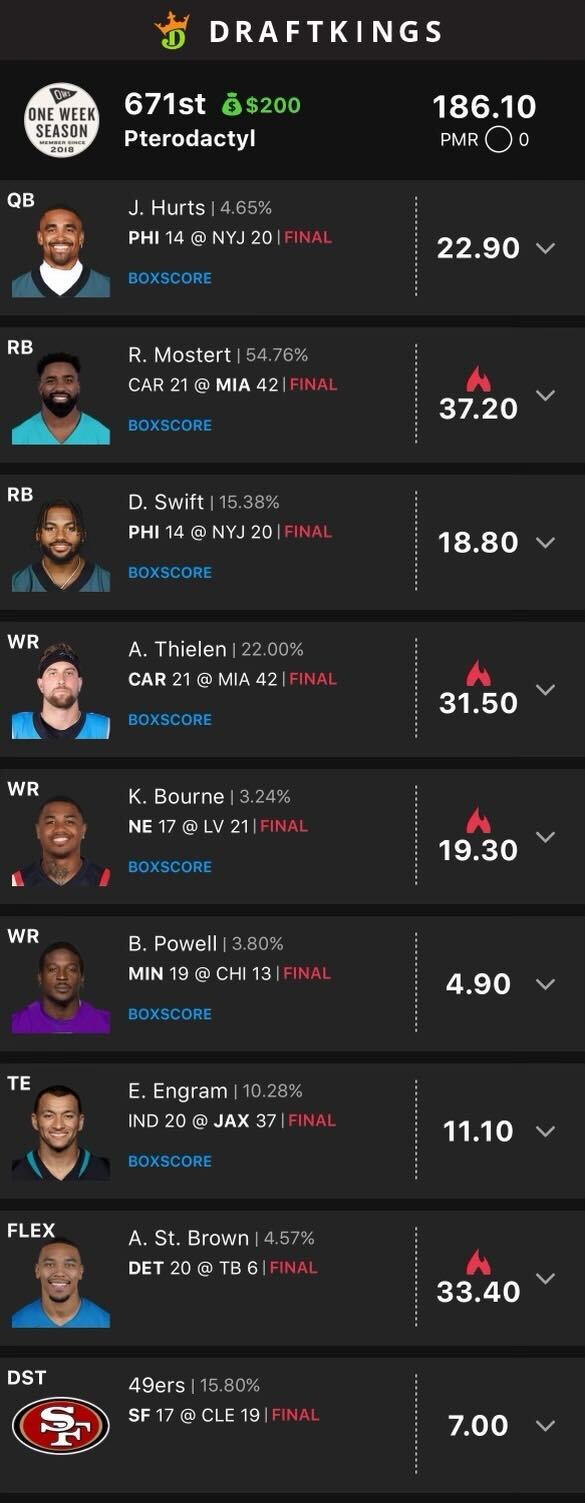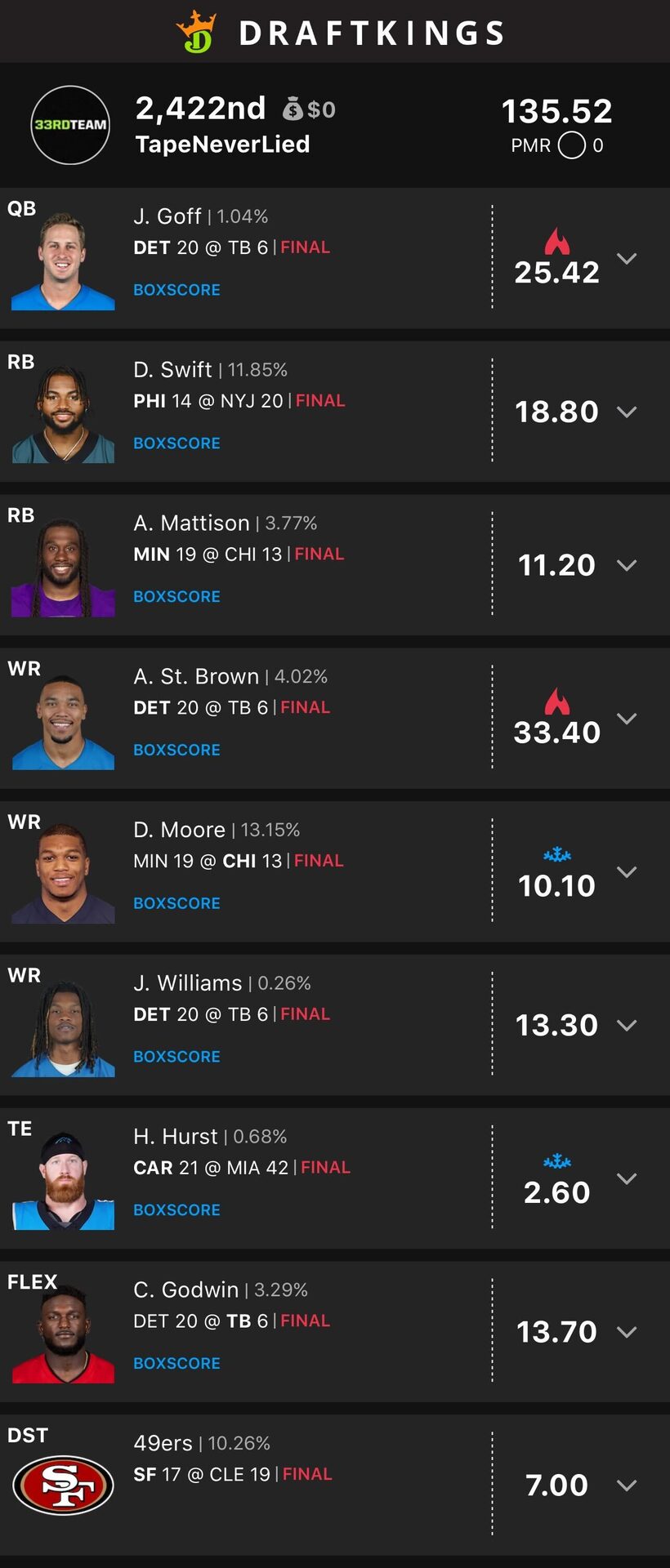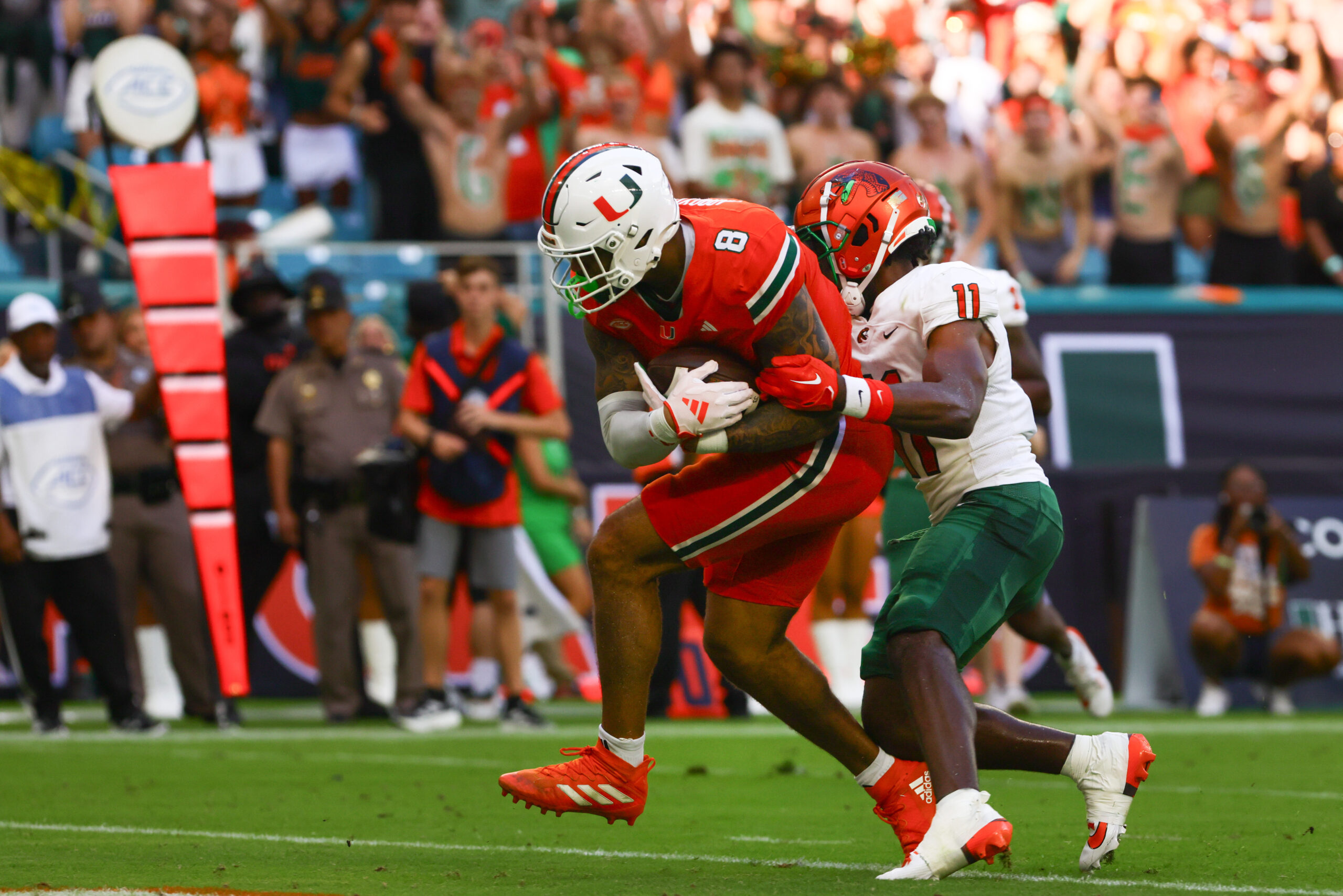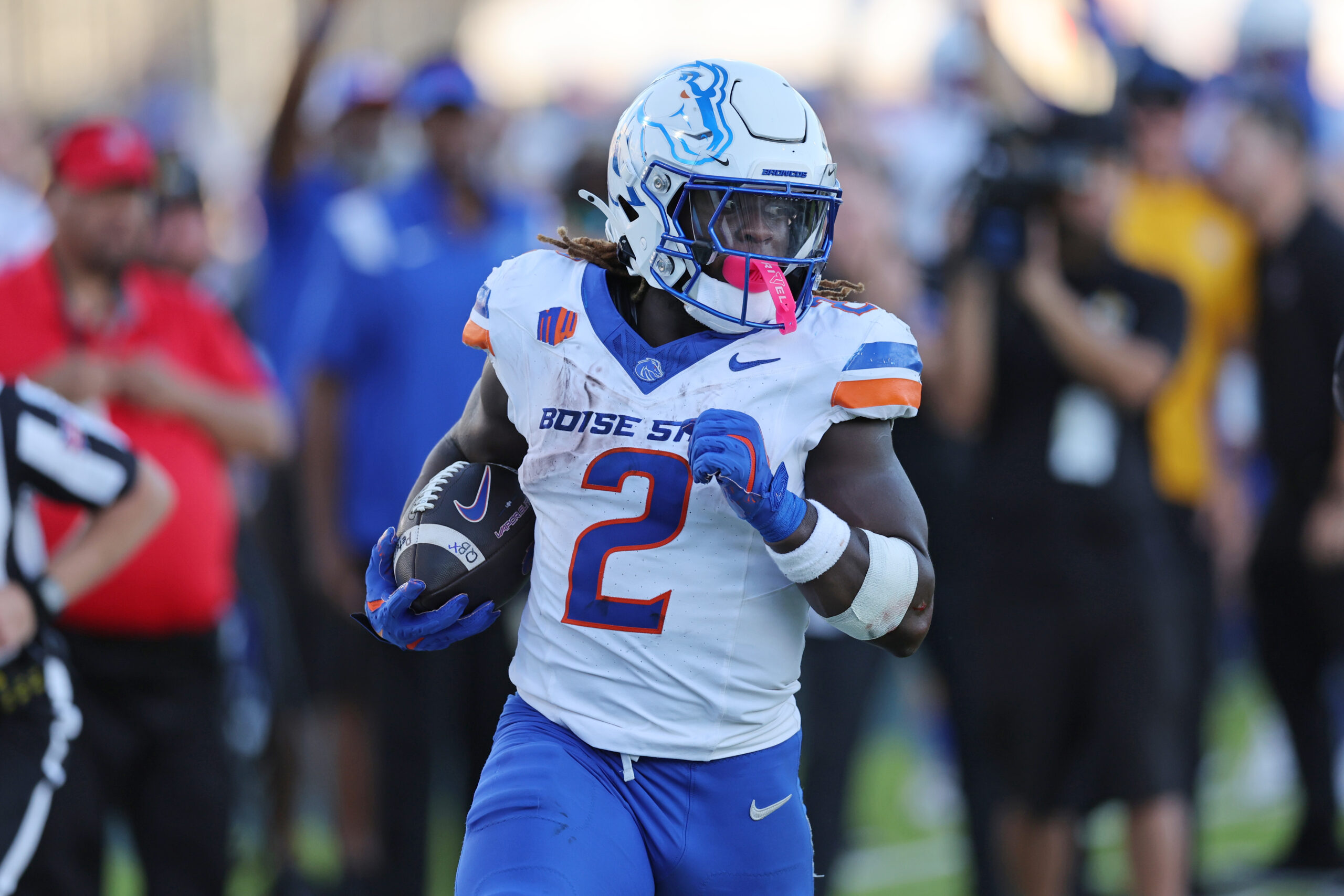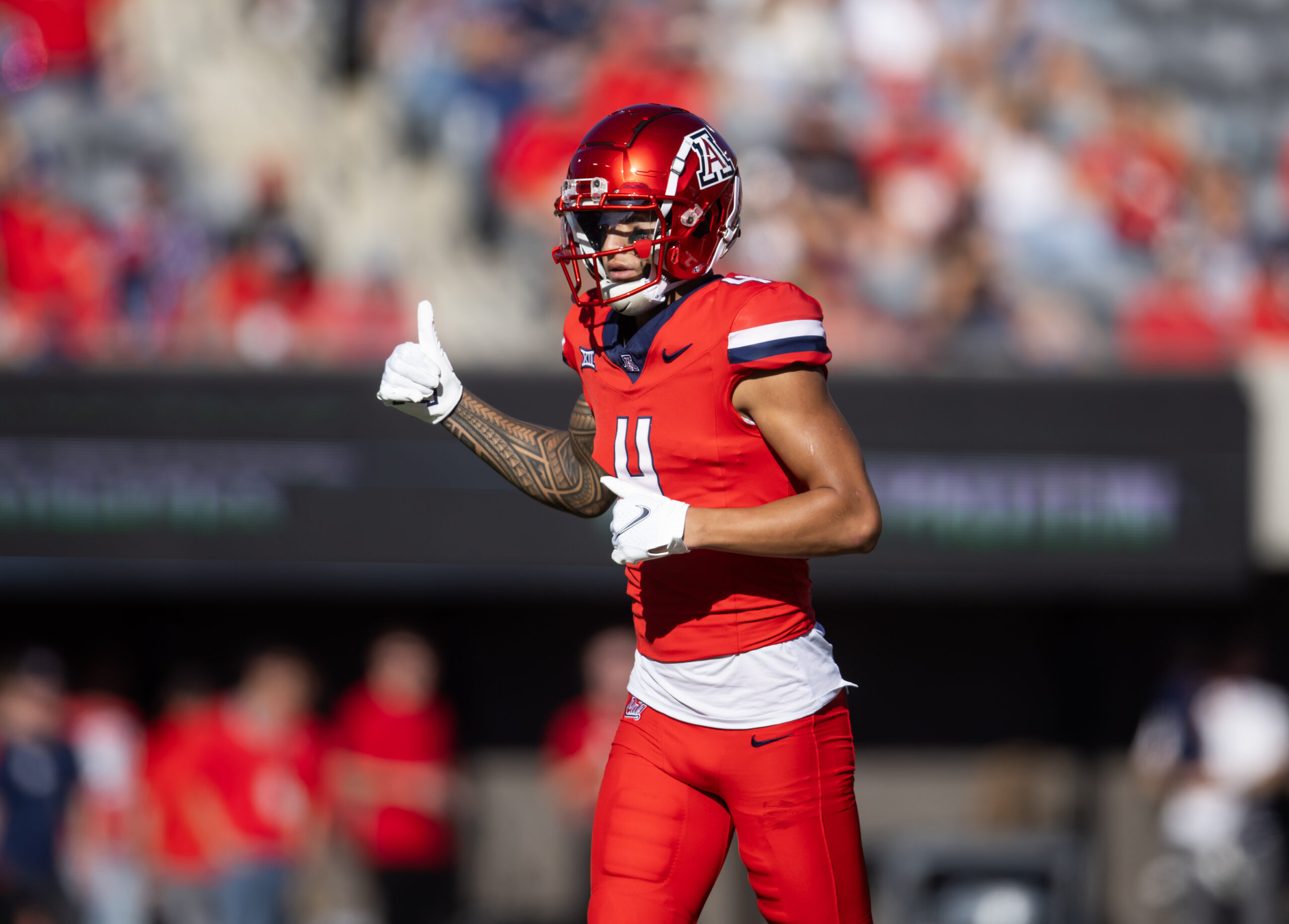Analysis
10/16/23
5 min read
2023 NFL Week 6 DFS Lineup Recap: What We Can Learn From Results
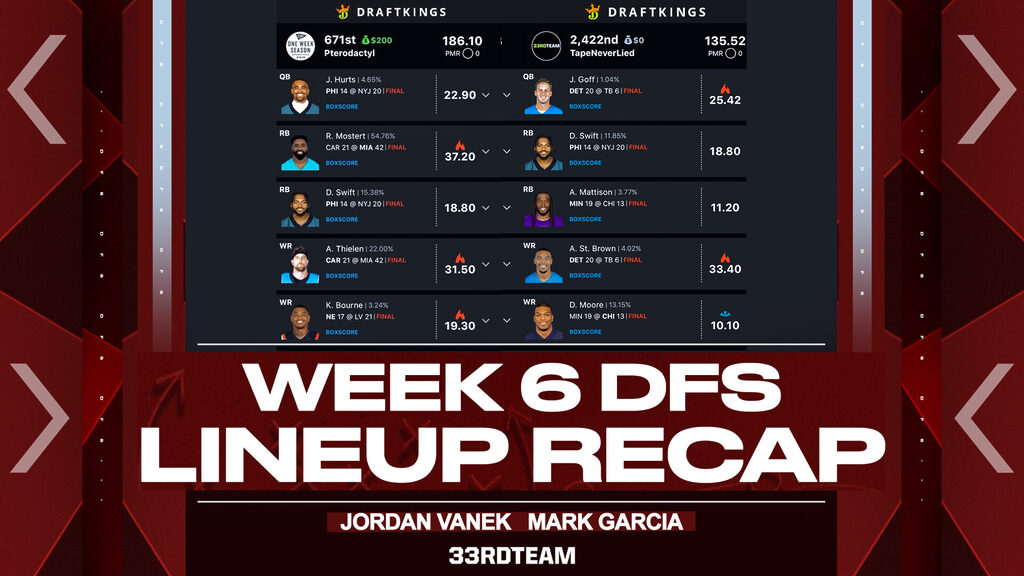
In DFS, crafting the perfect lineup is an art and a science. It requires a deep understanding of player dynamics, game environments and the unpredictable nature of sports.
In the following article, we will review two of our lineups to give you insight into how we constructed them and where we went wrong.
Mark Garcia’s Review
Contest: NFL $3.5 Fantasy Football Millionaire [$1 million to first]
Entrants: 207,215
Roster Review
Week 6 marked my second consecutive main slate attacking the Milly Maker through MME. I am still tweaking my process in that format but will continue to pass on the major lessons learned in addition to how I viewed the slate leading up to lock. On that note, we’ll again start by examining the major stands I took on the weekend.
In Week 6, I took four major stands:
- I played a condensed quarterback pool consisting of Jalen Hurts, Tua Tagovailoa, Justin Fields, Jared Goff, Matthew Stafford and Brock Purdy.
- Christian McCaffrey was one of the top single-point leverage stances on the slate — he was joined by Alvin Kamara, Kenneth Walker III, Kyren Williams, Raheem Mostert, D’Andre Swift, Chuba Hubbard and D’Onta Foreman in my player pool. I limited Foreman to a max exposure of eight percent.
- My tight end player pool consisted of T.J. Hockenson, Sam LaPorta, George Kittle, Dallas Goedert, Cole Kmet, Evan Engram, Logan Thomas and Hayden Hurst (this position marked my biggest pure mistake — more on this below).
- With Justin Jefferson out, I forced one player from the player grouping of Hockenson, Jordan Addison, K.J. Osborn and Brandon Powell onto every roster.
I also forced about 15 percent of Amon-Ra St. Brown because I viewed him as one of the highest leverage points at wide receiver. Here is an excerpt from the End Around, which is the final game theory piece I wrote for One Week Season to end the week:
“First off, St. Brown is expected to garner sub-two percent ownership coming off a missed game in a matchup against the extreme Cover 3 rates from the Buccaneers, an opponent that also blitzes at elevated rates yet has been largely unable to translate that aggression into elevated pressure rates in the backfield. St. Brown is Goff’s go-to man when blitzed and against Cover-3 is near the top of the league in targets per route run rate and yards per route run rate in those splits. Furthermore, if the Buccaneers are blitzing but can’t hit home against one of the top offensive lines in the league, it will open up the middle of the field in the gaps in coverage from Cover 3, which benefits both St. Brown and LaPorta. Again, would we be all that surprised if the Lions, a team that is averaging 29.6 points per game, scored four offensive touchdowns, and they all came through the air?”
This week felt to me like the field was going to struggle with the basics. As such, I focused intently on building team stacks through the optimizer built around my quarterback pool discussed above. Furthermore, I focused my play around the top on-paper running back plays on the slate without worrying too much about ownership at the position, the theoretics discussed in “Handling the Chalk” leading up to the weekend.
Jordan Vanek’s Lineup
Contest: NFL $3M Fantasy Football Millionaire
Entrants: 6,051
The majority of my lineup revolved around a Goff double stack featuring St. Brown and Jameson Williams. The decision to include Chris Godwin in the runback didn't pan out, but the core trio of Goff, St. Brown and Williams proved to be the perfect combination and arguably my best call of the weekend.
I went wrong by attempting to get too contrarian after playing Goff. I deviated from the popular and highly owned players of the weekend. For instance, I invested in an Alexander Mattison and DJ Moore mini-stack, totaling $12,100 in salary, when I could have opted for a mini-stack of Mostert and Adam Thielen for just $12,300.
Finding that extra $200 would have been feasible, especially by making some adjustments, such as downgrading my defense from the $4,000 San Francisco 49ers to the $2,900 Cincinnati Bengals, which would have freed up an additional $900. With that additional budget, I could have upgraded from Hurst to Kyle Pitts, a choice my coworkers were keen on for the weekend.
These strategic changes would have boosted my total points by an extra 64.1, potentially securing a win in the contest. The valuable lesson here is that once you commit to a quarterback with a projected rostered percentage of less than three percent, you gain the flexibility to invest in any popular, chalky players you desire.
There's no need to overemphasize uniqueness. Even though Godwin didn't excel as a runback in this situation, it's still advisable to incorporate runbacks into your main stacks. I could have potentially won without him as the optimal wide receiver in the lineup.
Follow The 33rd Team Podcast Network on Spotify and Apple Podcasts.
